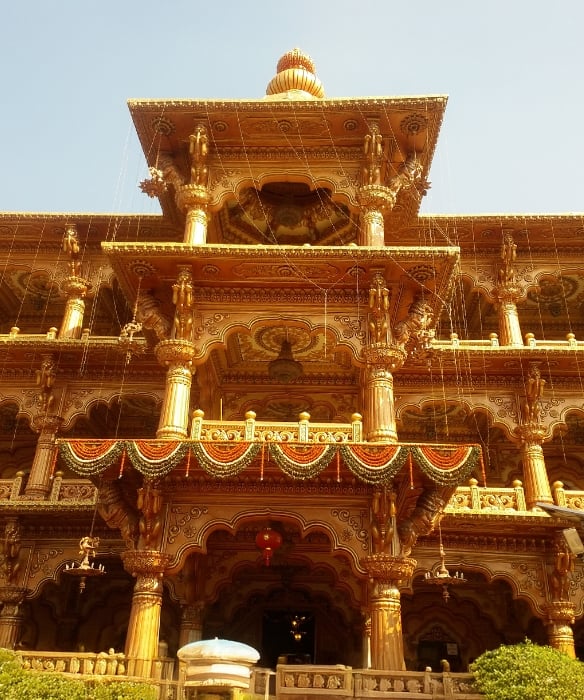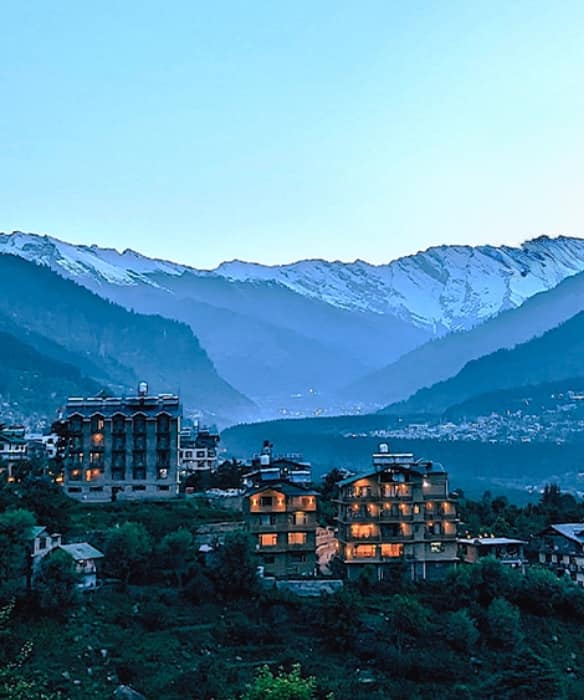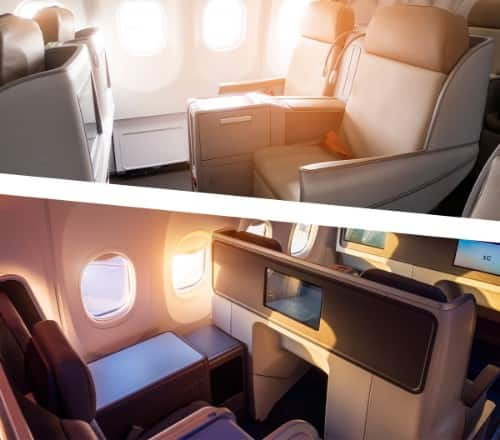Stay logged in to proceed with bookings, orders and offers.
On changing the terminal, you will loose items in your cart. Are you sure you want to change your terminal?
Are frantic holiday itineraries leaving you exhausted? It may be time to embrace slow travel, a concept that is regaining momentum in today’s travel-thirsty industry.
In the last decade, an endless number of articles and travel vlogs on the internet had us sold on the superfast globetrotting lifestyle. The travel 'bucket list' was a term thrown around on all platforms. It was very tempting, all-encompassing and very difficult to ignore. We even managed to pull it off for a while. Be it covering a dozen treks on a trip to Manali or hopping 25 islands in a week in Thailand—travellers took whirlwind vacations and showed them off on various social media platforms. But then, 2020 happened. The idea that we have only one life (and only one planet) took on a whole new meaning as we saw our lives come to a sudden halt, and at the mercy of an invisible, microscopic enemy. We couldn't even step out of our homes without fearing for our lives, let alone travel to distant destinations. As normalcy gradually resumed, we were forced to take a long, hard look at our recent approach towards travel and whether it was adding any value to our lives. The answer we mostly found was a big 'no'. Thus, the concept of slow travel was revisited. The notion of slow travel came to the fore in the 1980s, in Italy. The idea was centred around the promotion of local people, their culture, produce, and even music—emphasising on a deeper connect—and was meant to leave a long-term impact on tourists. The primary focus was on the quality of the travel experience.
Slow travel challenges the mainstream routine of planning attraction-infused and activity-heavy travel itineraries, where tourists rush from one location to another and cover as many places as humanly possible, within a short time frame. Instead, it focuses on building meaningful connections, learning activities, and gaining enriching experiences. It also places emphasis on being immersive in the local culture of a place, its traditions, food, and way of life. In a nutshell, Slow travel is about appreciating the opportunity to have a peek into lifestyles and customs that are different from yours.
If you are hesitant to try out slow travel, here’s some incentive for you:
1. To give yourself a break
The concept of slow travel emerged as a response to the realisation that fast-paced travel itineraries often catered to the herd mentality perpetuated by social media. This mindset promotes the notion that uploading numerous pictures from popular destinations results in more likes, comments, and shares. However, this perspective contradicts the true essence of travel.
Rushed itineraries stretch you thin and leave you exhausted, thus defeating the whole purpose of a relaxing vacation. Moreover, it also limits your ability to truly experience a location that you’ve spent money and energy visiting.
2. To have better stories to tell
Slow travel frees you from the immense pressure of ‘seeing everything’ and simplifies what you may want out of your vacation. It lets you travel at your pace, rejuvenate your mind and body, and have impactful stories to take back home with you.
Later, when you recount your trip to your friends and family or write a travelogue, you will have meaningful memories rather than flashbacks of zooming car rides or airport layovers. You will remember your experiences and you won't have to rely on your Instagram feed to relive your holiday.
3. To go easy on your pocket
Everything costs money—that’s how the world works. The busier your travel itinerary is, the more substantial the dent it will create in your wallet. Back-to-back flight tickets, multiple hotel bookings, piling several activities together, etc. are going to make the trip cost you an arm and a leg, and then some!
Slow travel helps you plan a trip on a budget. This doesn't mean you need to compromise on comfort or convenience—it just helps you spend money in what matters the most. For example, instead of hiring four-wheelers for a day of sightseeing, you could use public transport or rent bicycles to explore the everyday life of the city and visit tourist spots that fall on your way.
4. To protect the environment
While it is true that no single person can reverse the effects of climate change, billions of people making sustainable choices will surely make a significant impact. With fast travel, you leave behind a massive carbon footprint.
Frequent flights lead to huge carbon emissions, depletion of local resources, encroachment, and deforestation, among other contributing factors, are all outcomes of fast travel. Since quick transitions are not a priority in slow travel, it puts far less stress on the environment and helps replenish natural resources.
Despite slow travel becoming a trend of late, there are some myths associated with it that need debunking.
Myth #1: You need at least a week for slow travel
There is no definite duration for slow travel. It can be a trip of any duration, be it over a weekend or a fortnight. As long as you are planning the trip with sustainability in mind and an itinerary that leaves enough of time for leisure, it qualifies as slow travel.
Myth #2: Slow travel means you only live in hostels and walk everywhere
Slow travel does not have to be difficult. While backpackers do prefer to live in hostels and focus on walking tours, that is not what slow travel is restricted to. You can still fly to your destination and book luxury resorts if you want to.
The goal of slow travel is to limit the chaos of a rushed vacation, where there is no time to pause and fully enjoy the moment. Why would you book an expensive five-star hotel if you are unable to enjoy their spa facilities or the impressive breakfast spread because you have to leave at 7 am, every day, to go sightseeing?
Myth #3: Slow travel is anti-technology
Slow travel should not be confused with going off the grid. You’ll still need technology for slow travel, since bookings and reservations are mostly done online. So, if the fear of giving up the use of your mobile phone or laptop is stopping you from trying slow travel, fret not.
However, slow travel does advocate for digital minimalism, but only as a tool rather than a binding requirement. Let it assist you in finding the most sustainable homestay that uses solar power, finding a walking tour with a local guide instead of an operator, figuring out routes in a new city when taking public transport, etc.
If you’re sold on the idea of slow travel, here are some stellar locations in India where you can try it out.





The Adani One expressly disclaims all liability, direct and indirect, in respect to actions taken or not taken based on any or all the contents of this Blog. The Blog is an opinion of the contributor based on the collation of data from various sources and is provided only for information purpose. Adani One does not canvass, advertise, solicit, invite or induct for any product, merchandise, information, brand or any other materials mentioned in the Blog, nor does it obtain any monetary benefit from the same. Reader is advised to read and apply his/her intellect and discretion in this regard. Any Intellectual Property mentioned in this blog belongs to the rightful owner. We do not intent to claim any interest over the same.